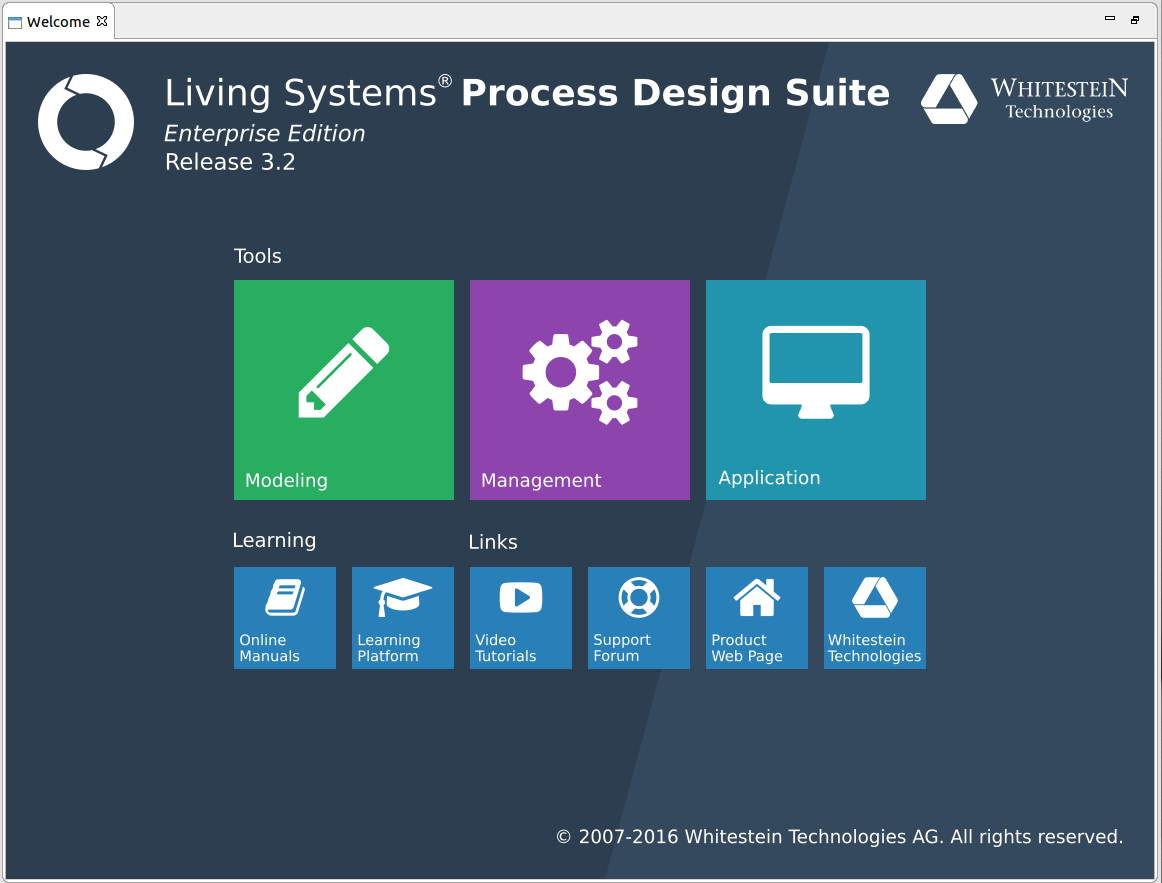
Only single-user installation is supported. The single-user installation is what you use to set up PDS on one computer for one user.
Before installing PDS, make sure you have JDK installed. Optionally set the JAVA_HOME environment variable (If not set, you will need to enter the path to your JDK in PDS manually).
PDS requires the following:
Important: We recommend to run JVM with at least
-Xms1024m. However, the requirements of your environment might vary. Test your set up thoroughly.
Important: If you plan on developing your custom Application User Interface, make sure to meet the requirements of LSPS SDK. Also when deploying LSPS to your own server, make sure to use a supported environment.
To install Living Systems® Process Design Suite, do the following:
Setup-LSPS-Enterprise-$VERSION file.The installation wizards installs Living Systems® Process Design Suite on your computer with the Embedded server and optionally the LSPS Software Development Kit (SDK).
If you install the SDK, the system installs LSPS artifacts and Embedded Application Server dependency to your Maven repository, and connects PDS with Maven: you need SDK if you plan to develop a custom Application User Interface (for details, refer to the Customizing Application User Interface).
The settings provided during the installation are stored in the lsps-design-$VERSION.ini file in the LSPS folder.
To change JVM and Maven properties after you have already installed LSPS, edit the $LSPS_HOME/lsps-design.ini file (on 64-bit architectures $LSPS_HOME/lsps-design_64.ini).
Note: To use your system Java as defined by JAVA_HOME, you can delete the -vm property, since the system Java is used by default.
To launch the Process Design Suite, do the following:
lsps-design binary for your platform:lsps-design.exe and on Windows with 32-bit architectureslsps-design_64.exe on Windows with 64-bit architecturesProcess Design Suite on Maclsps-design on LinuxIn the Workspace Launcher dialog box, choose a workspace folder and click OK.
If the chosen workspace folder does not exist, it will be created. A workspace is a folder, where the resources stored during the session are located. Its content is reflected in the workbench.


Note: The Welcome command is not available, if all perspectives are closed. To activate the Welcome command, open a Process Design Suite perspective: go to Window -> Open Perspective -> Other and in the Open Perspective dialog box, click a Process Design Suite perspective (You can display it at any point from the main menu Help -> Welcome item.
Refer to one of the following:
To renew an expired license, copy the new license file into $LSPS_HOME. On Mac, place the license in $LSPS_HOME/Process Design Suite/Contents/Eclipse/ directory.
To uninstall Process Design Suite, run the uninstall file:
$LSPS_HOME\uninstall.bat$LSPS_HOME/uninstall or delete the $LSPS_HOME directory